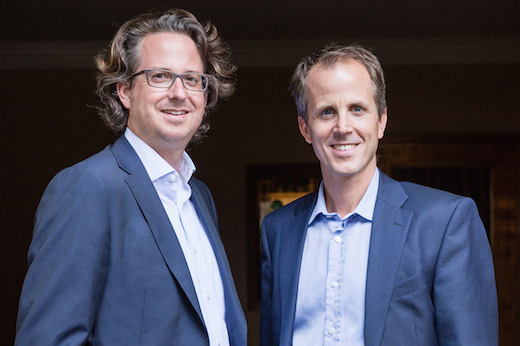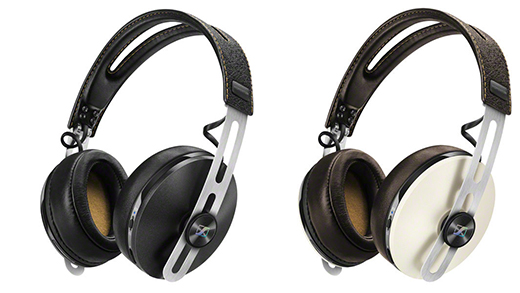Last month, Art Center welcomed Sennheiser co-CEO and Product Design alumnus Daniel Sennheiser (BS 96) to Hillside Campus to inaugurate its BOLD Lecture Series.
Speaking to a group of students and alumni packed into the Los Angeles Times Auditorium, Sennheiser shared lessons he’s learned as a creative entrepreneur and gave a behind-the-scenes look at how he’s implementing a culture of design thinking into his family’s venerable audio company—a company whose many achievements include revolutionizing personal audio by creating the world’s first on-ear headphones in 1968—which this year celebrates its 70th anniversary.
Below are highlights from his presentation:
On failure: It’s very important in your life to have moments where you fail. Failure is part of the journey. You learn it everyday in school when you go through moments where you feel like you’re failing. I still fail at a lot of things, but I get back up. And ultimately, success is standing up once more than you fall.
On making the implicit explicit: Sennheiser is about shaping the future of audio, based on its heritage, innovation culture and passion for excellence. That’s our vision statement. It’s important to put that statement out there for the company. When my brother and I took over the company, we had to move from a patriarchal leadership style to a modern participative style. That meant we needed to make the implicit explicit. Today, the company is 2,700 people large, we’re in more than 50 countries, and we have €630 million turnover. So you need to make these things explicit. And that’s where you as designers have a unique skill.
On being family-owned: Sennheiser is still a family company. It’s still family-owned and family-run. That has several implications. It means you think more long-term. We don’t care about quarterly results. We don’t care so much about annual results. If it makes sense to invest, we invest. It also means taking personal responsibility for what you do. It’s much more than a job. I feel personally responsible for the lives of 2,700 families, and, on the other side, all our customers.
On self-financing: We’re completely self-financed so we don’t have to talk to banks who will tell us what to do and what not to do. My grandfather started that. He had to take a loan at one point … and it was such a bad experience … he paid back that loan as quickly as he could and never took out another loan. Today we’re much more relaxed about banks.
On customers: Independence is what drives our innovation culture. It’s what drives our decision-making. Independence allows you to make decisions based on customer understanding. We spend all our time really only thinking about our customers. And that’s a very design-oriented approach.
On invisible ubiquity: Hundreds of stars use our products everyday. You actually see our products on television every night. Roughly 60 to 70 percent of TV shows use our equipment. The bad news is that nobody knows it because TV shows don’t want to show logos. But they still rely on our product, and that’s the professional part of our business.
On emotions and technology: Senneheiser is based on intense science. We explore the limits of what is audible, and the limits of what is way beyond audible, because we know now that you’re emotionally touched by frequencies in the infrasound and ultrasound spectrum. We’re not so much in the technology field. We’re actually creating emotions. And audio creates specific emotions. Switch off the audio of your TV screen while watching a horror movie and it doesn’t work. Just listen to the soundtrack and you’ll still be scared.
On “the pursuit of perfect of sound”: That’s a claim we started three to four years ago, because we felt we needed to explain to people what Sennheiser is about. Just saying, We’re better than everybody else? That wouldn’t be us. “The pursuit of perfect sound” is something we can engage with along with our customers. Our customers are in the pursuit of perfect of sound. So are we. It’s more about a journey than a destination. This claim shows us a guiding light, the purpose of the company. Every company needs a purpose. We need strategy, but we also need purpose. And purpose drives people much closer, much deeper.
On reliability versus creativity: Today, I’m not a designer. But I use design thinking. I use design and apply it to business problems. How does this work? It’s important to understand that in a company there’s a business side and a creative side. One side isn’t better than the other. The business side is all about reliability, making sure you control risk, and that you produce results that are predictable. The creative side is all about validity and what is right for the user.
On data versus anticipation: The business side is based on data you’ve collected in the past. What designers work on is anticipation. In your classes, you’re anticipating the future, you’re anticipating technology, you’re anticipating what could be there. It’s not possible yet, but it’s important. But to run a business you need to base it on what’s available, the resources you have, the money, the people, the technology, the skills.
On process versus exploration: The business side is process-oriented. It’s about going to market, quickly producing a result. The creative side is explorative. It’s about failing fast and trying something new.
Organized by Art Center’s Alumni Relations department, BOLD aims to bring together a diverse group of artists, designers, entrepreneurs and industry experts to deliver presentations, lectures, and practical workshops focused on the future of creative entrepreneurship, freelance studios, design-driven startups and artist-run businesses and nonprofits.











